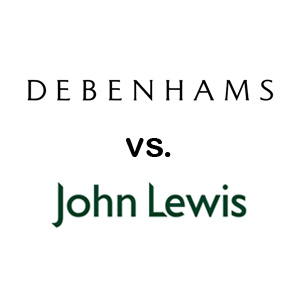Why have Debenhams not done as well as John Lewis?
Many retailers and online shops saw the Christmas surge come later this year, with more customers leaving their shopping to the last minute. Increased trust in online shopping delivery times may have been a factor in this, but either way it seems the Christmas rush came later for almost everyone this year.
But why did Debenhams struggle while John Lewis and House of Fraser enjoyed good sales? All three responded to the late demand with sales, price cuts and offers which hit profits.
There could have been a few factors that played a part in the profit warning of a 20% decrease from last year. For example in January Debenhams revealed that their Oxford Street refurbishment was going to cost more than expected. One might question the wisdom in spending so heavily on bricks and mortar when the trend towards ecommerce is so clear. Perhaps spending more on online strategy may have been more prudent?
This is especially interesting when you consider that almost all of the big retailers are reporting more and more of their sales are taking place online.
So let's see how Debenhams, John Lewis and the others compare in terms of online presence.
Some social media follower numbers may be telling:
| Debenhams | John Lewis | House of Fraser | Next | |
| 253k | 715k | 287k | 1.3m | |
| 71k | 106k | 129k | 89k | |
| Google+ | 147k | 211k | 125k | 160k |
| YouTube | 2k | 27k | hidden | 981 |
| 3k | 164 | 6k | 7k | |
| Total | 476k | 1m | 547k | 1.6m |
As expected, Debenhams ranks below the others on most platforms and in total. But how about their website itself?
| Debenhams | John Lewis | House of Fraser | Next | |
| PageRank (higher is better) | 6 | 5 | 5 | 5 |
| Estimated December 2013 Visitors | 5.4m | 9.5m | 3.8m | 4.8m |
| Page Load Speed (lower is better) | 2.036s | 1.895s | 2.251s | 0.826s |
| Inbound Links | 6.9k | 10.1k | 5.2k | 7.8k |
Surprisingly, Debenhams actually have the highest Google PageRank and the second highest number of visitors. So perhaps the problem lies in the website itself.
Subjectively, when compared to the John Lewis website it is more confusing and messy, making it harder to navigate. Certain things stand out straight away:
| Debenhams (debenhams.com) | John Lewis (johnlewis.com) |
| Large banners are not clickable or have a very small click area which isn't obvious. | Large banners take you to the offer you clicked. |
| Categories are not very deep, for example selecting beds lists all beds ordered by best selling, which is likely to become self-fulfilling as more of the featured beds are sold. | Selecting beds will give you a far more manageable choice of subcategories. It's likely the customer will know what subcategory of bed they want, making their search easier. |
| The design is complex, messy and busy. | The design is clean, minimal and efficient. |
| URLs have no keywords such as: http://www.debenhams.com/webapp/wcs/stores/ servlet/prod_10701_10001_321003019899MISC_-1 |
URLs are keyword rich such as: http://www.johnlewis.com/john-lewis-keep-oak-storage-bedstead-kingsize/p475265 |
| One of this year's biggest sellers, tablets are dealt with quite awkwardly, you have to go off to another site (losing your current basket) after being warned that your debenhams card won't work on it. Hardly a great user experience: Debenhams Tablets |
Tablets are beautifully integrated in to the site, as expected: John Lewis Tablets |
The above is by no means an exhaustive list, it was very quick and easy to spot each of these massive failures and there are undoubtedly many more. Depending on the ecommerce software Debenhams use, it may be complex to fix some of them and a full redesign may be preferable but you can be sure that most if not all of the above are costing them a lot of money on a daily basis and they are a good indicator that Debenhams may have invested budget in other, less profitable areas of the business than the ecommerce website, which given the clear industry trend, is puzzling.



















